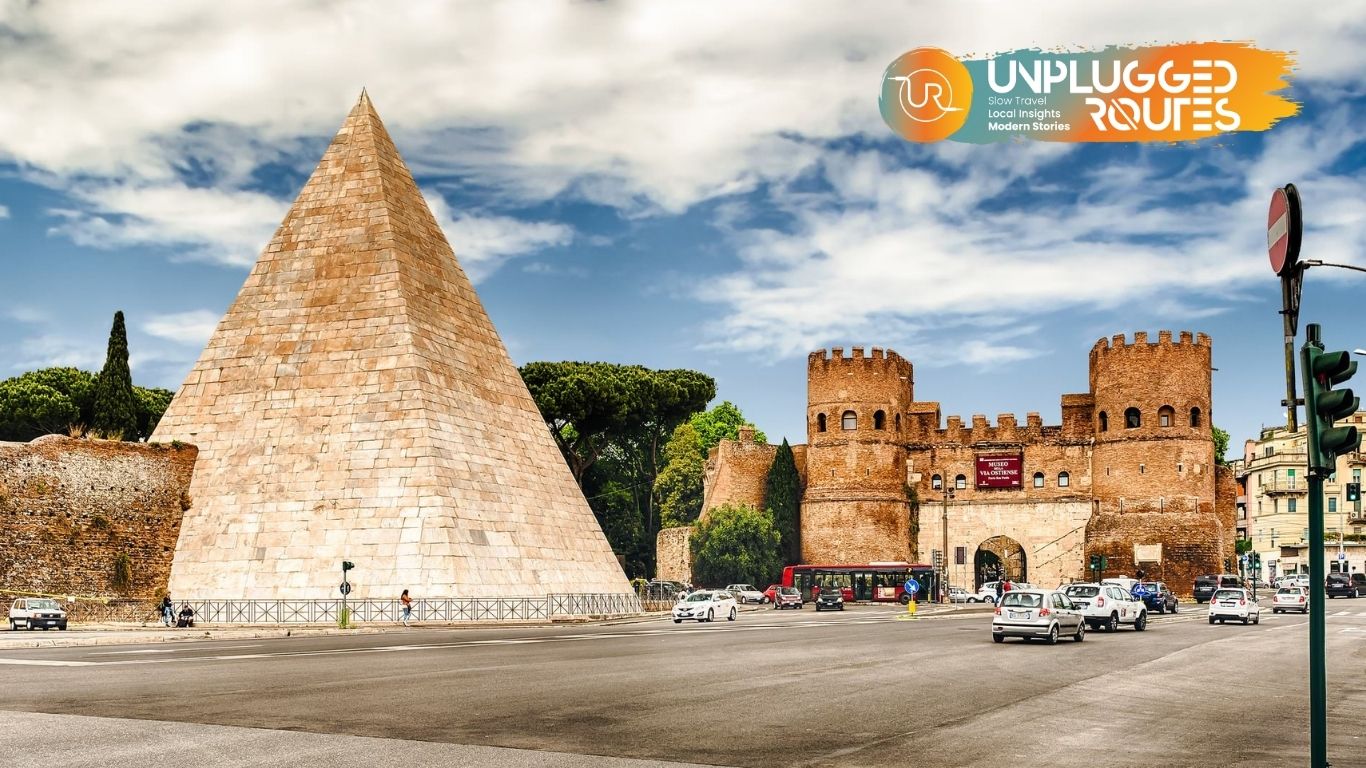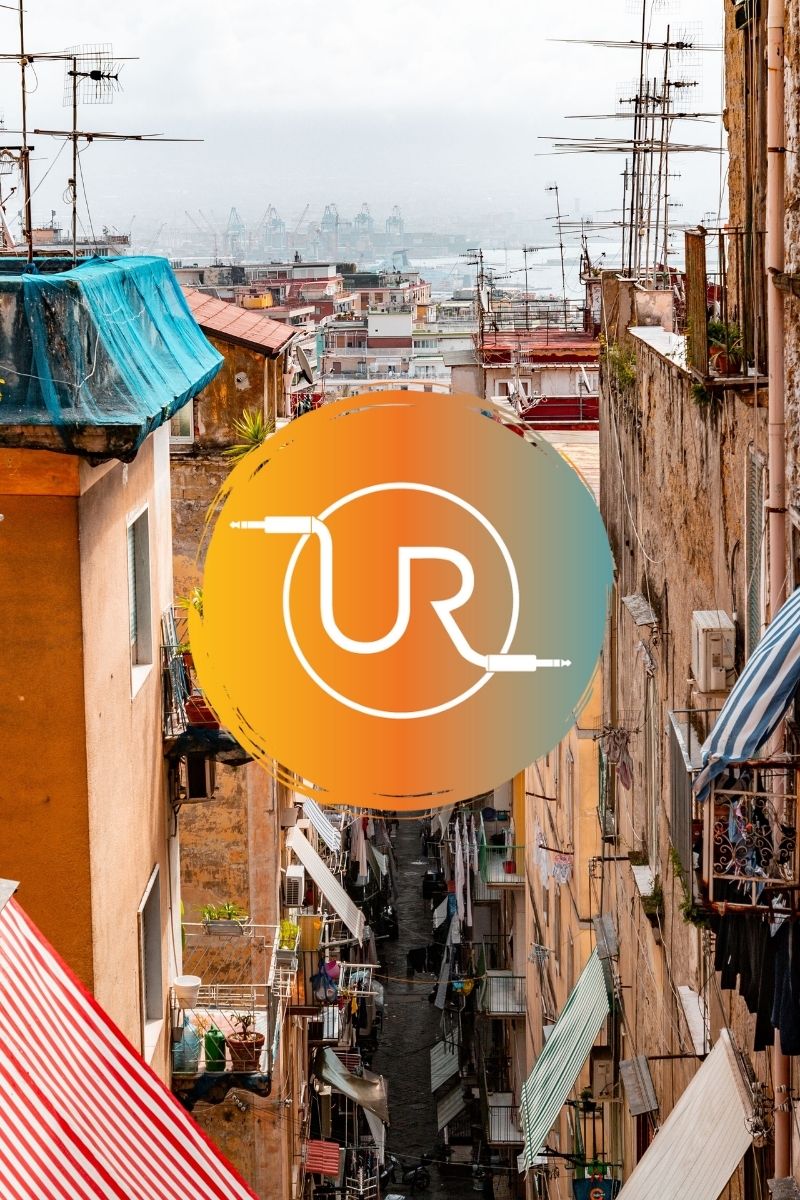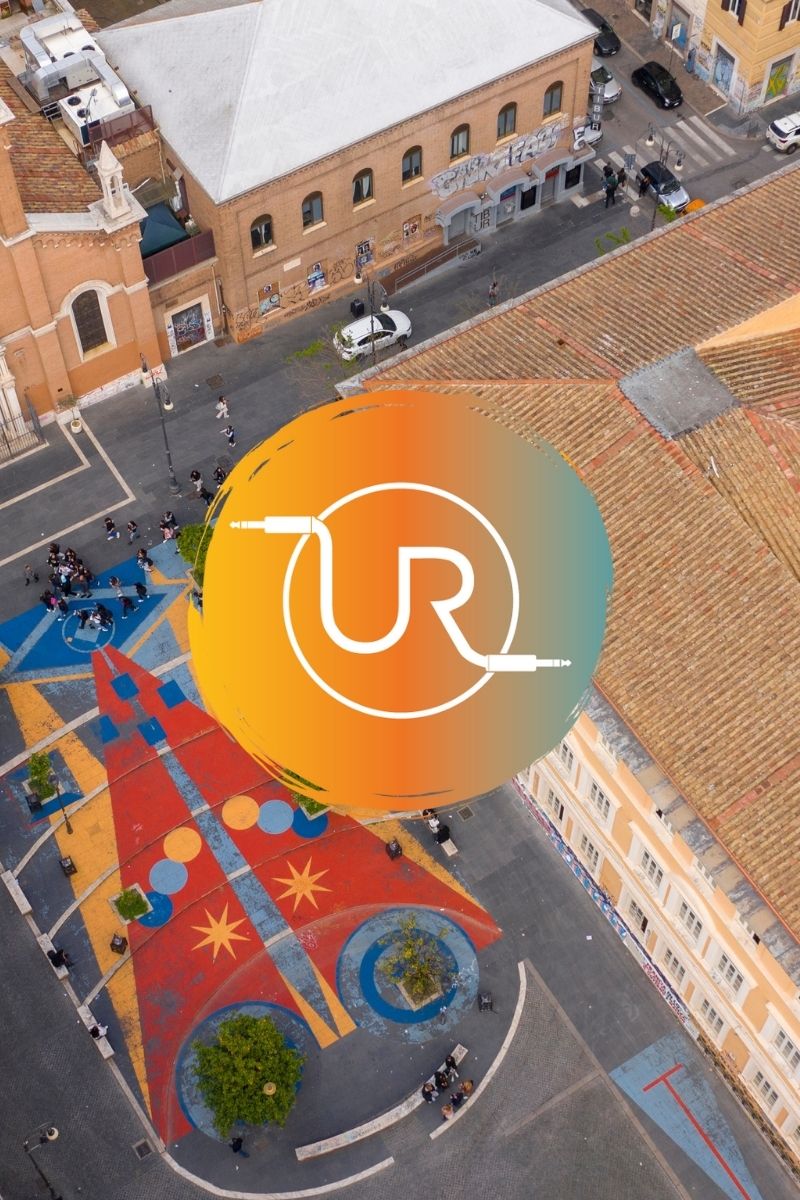
The iconic buildings in Rome’s city center, such as the Colosseum, Pantheon, Trevi Fountain and St. Peter’s Basilica, are known all over the world and welcome millions of tourists every year. However, in the southeast of the city, close to the Ostiense and Testaccio neighborhoods, there is a much lesser-known but equally impressive structure: Piramide Cestia. Mısır piramitlerinden ilham alan bu yapı, Roma’daki Antik Dönem mezar anıtları arasında benzersiz bir yer tutuyor. Bu blog yazısında Piramide Cestia’nın ilginç tarihi, mimarisi ve bugününden kısaca bahsedeceğiz.
A Roman Pyramid Inspired by Egyptian Civilization
The Pyramide Cestia was built for Gaius Cestius, an influential “preator” (senior Roman magistrate) who lived in Rome between 18 and 12 BC. It differs from other famous funerary structures in Rome in that Gaius Cestius chose for his tomb the pyramid architecture popular in Egypt, far away from Rome. So why did a Roman citizen choose a pyramid as a funerary monument?
At the time, Rome had become one of the largest empires in the Mediterranean world and had conquered Egypt in 31 BC, engaging in a process of deep cultural interaction. Egyptian religious rituals, art and architecture quickly became popular among the Roman aristocracy. As a result of this Egyptian influence and admiration, Gaius Cestius chose to build a pyramid for his tomb so that after his death he would be remembered like the pharaohs. In fact, there are known to have been at least three other pyramids in Rome that unfortunately did not survive. Two of them were located in the area where the twin churches of Piazza del Popolo stand today and one on Via della Conciliazione. This third structure, called the ‘Vatican Pyramid’, was demolished in 1499 by Pope Alexander VI Borgia to open the road connecting St. Peter’s Basilica to the river; the remains of the pyramid were unearthed in 1948-49 during road works after the construction of Via della Conciliazione. The pyramid of Gaius Cestius, dedicated to the brothers Remus and Romulus, the protagonists of the story of the founding of Rome Meta Remiand the Vatican Pyramid Meta Romuli and according to legend, the spot where St. Peter was martyred is located in the middle of these two pyramids.
Architectural Details of the Pyramid
The Pyramid of Cestia has a very remarkable architecture. Gaius Cestius, who prepared a detailed will, left detailed information about the architectural details of the building. The outer walls of the pyramid, which is 36 meters high and 30 meters wide at the base, are made of bricks and the surface is covered with Carrara marble. In accordance with Cestius’ will, workers were given only 330 days to complete the mausoleum so that his heirs would not lose their inheritance rights. An embankment built around the tomb using tuff was completed with 4 columns corresponding to the 4 corners of the pyramid. Two of the columns were unearthed in 1656 and immediately placed in their original positions at the request of Pope Alessandro VII Chigi. The construction of such a magnificent structure in such a short period of time is a tangible proof of the level of sophistication in Roman construction techniques.
Although the project was inspired by the pyramids of Giza in Egypt, the pyramid of Cestius is much smaller in size. It is not known for certain whether Gaius Cestius was cremated in the frescoed burial chamber or buried in a sarcophagus. Although he had willed to be buried with the valuable carpets he owned, his will could not be fulfilled because Emperor Augustus passed a law prohibiting the display of luxury items in public ceremonies. The heirs decided to sell the carpets, and with the proceeds of the sale they commissioned two bronze statues with gold plating to be placed at the entrance of the pyramid. Although the statues have never been found, the pedestals on which the will was inscribed are now on display at the Capitol Museum.
Transformation over Time
The Pyramide Cestia has been used for different purposes throughout Rome’s rich history. In the Middle Ages, it was incorporated into the Aurelian walls surrounding the city of Rome, thus becoming an important element of the city’s military defenses.
With the Renaissance period, ancient buildings in Rome became a source of inspiration for artists. Travelers to Rome could not hide their admiration for the fascinating architecture of the pyramid and immortalized this exotic structure in their works. The Pyramide Cestia became one of the most important artistic references in the city, especially during the Romantic period.
Location and Environment
Right next to the Piramide Cestia is the Cimitero Acattolico, one of Rome’s most famous cemeteries. This cemetery occupies an area allocated by the Church in the early 1700s for the burial of non-Catholic foreigners and, in exceptional cases, Italian citizens, and is home to the tombs of many famous personalities, including poets, artists, scientists and diplomats.
Piazzale Ostiense, where the pyramid is located, is in the modern part of the city and is easily accessible from the Ostiense metro stop, which connects to the Colosseum. Although the burial chamber inside the pyramid is not open to the public, it is worth a trip just to see this impressive structure from the outside. On this occasion, you can visit the characteristic Ostiense and Testaccio neighborhoods and collect interesting stories about cinema, street art and criminal gangs. This area also reflects the dynamic face of modern Rome with its restaurants and cafés.
Discover Rome’s Hidden Treasures with Unplugged Routes!
Buildings waiting to be discovered, such as the Pyramide Cestia, offer visitors a completely different experience outside the known face of the city and the usual routes. Inspired by the ancient Egyptian civilization, this extraordinary structure also reveals the cultural diversity of Rome. Those who choose Unplugged Routes for their next trip to Rome will not miss this magnificent structure and the unique neighborhoods around it!







Leave a comment: